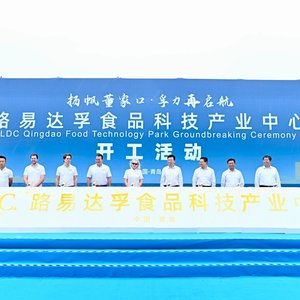A South Dakota State University (SDSU) fisheries scientist is developing a soy protein feed that\'s tasty and easily digestible to eventually reduce the industry\'s need for using wild-caught fish as food for farm-raised fish.
Much of the tilapia, Atlantic salmon and catfish that Americans toss into their shopping carts are raised in fish farms, where companies traditionally feed them pellets containing anchovy, menhaden and herring. The harvest of those small species has pretty much flat-lined and humans\' increased demand for fish has driven up the cost of creating the pellet feed, according to SDSU professor Mike Brown.
\"We\'ve fully exploited that resource,\" he said, noting that the goal is to create a more sustainable and cheaper food source. Traditional fish feed is currently costing between $1,450 and $2,000 per metric ton (MT), while soybean meal runs about $425 per MT.
Using more soy has the potential to open new markets to soybean farmers dealing with stockpiles that have driven down prices, said Jeremy Freking, executive director of the South Dakota Soybean Association. The South Dakota Soybean Research & Promotion Council has invested $1.7 million into ongoing work at South Dakota State, which is being commercialized at the site by Prairie AquaTech.
Researchers have been working with coho salmon, rainbow trout, barramundi, white leg shrimp, yellow perch and hybrid striped bass, to see how much soy can be added to their diets without affecting physiology or reducing growth.
“The goal in agriculture and aquaculture is to have 100 percent of an ingredient digested, absorbed, metabolized and incorporated into muscle tissue,” said Brown. Through pre-treatments and microbial fermentation, his research team has been able to increase the ability of fish to digest more than 95 percent of the protein and energy.
However, environmentalists fear that feeding fish species an uncommon food source could produce excess waste that muddies up inland tanks or offshore waters where fish are raised.
It\'s important to look at the entire environmental footprint — and industrial fish farms already have a pretty large one, said Patty Lovera, assistant director of the Washington-based sustainability group Food & Water Watch.
\"Nothing\'s free in terms of environmental impact,\" she said, \"so you have to count the soy production system in whatever you\'re calculating.\"
Source: The Big Story. Read the article here.










